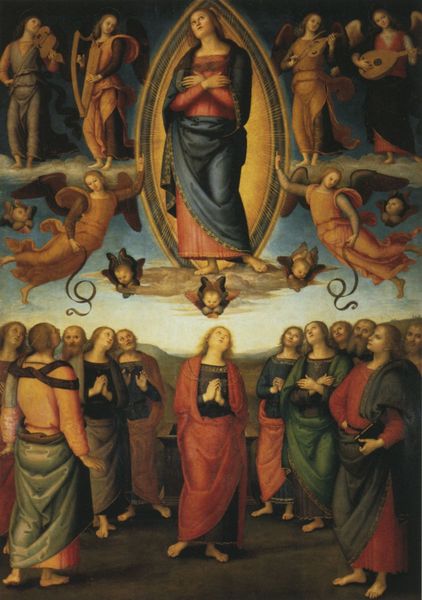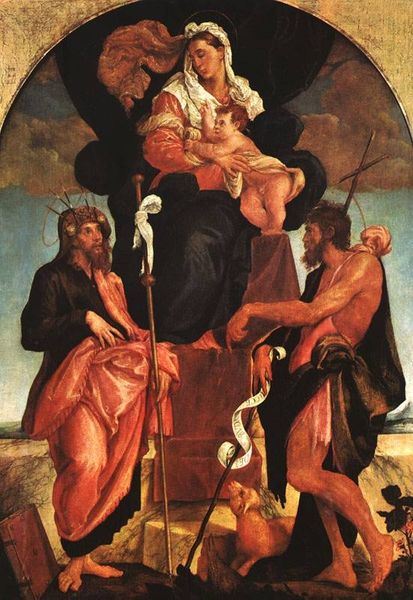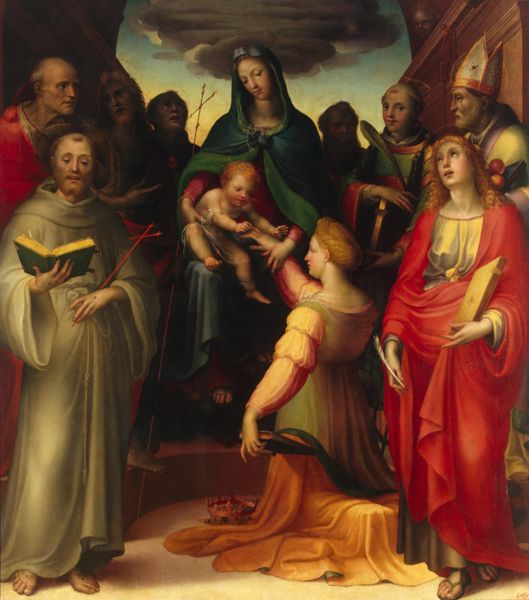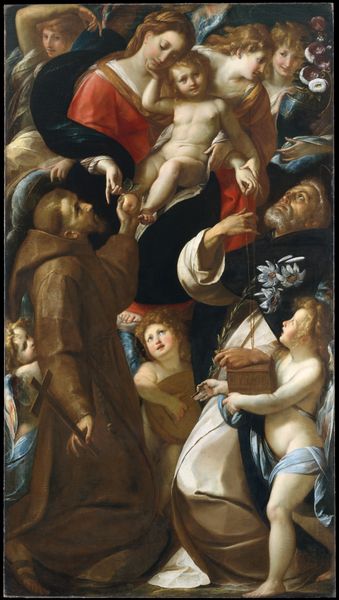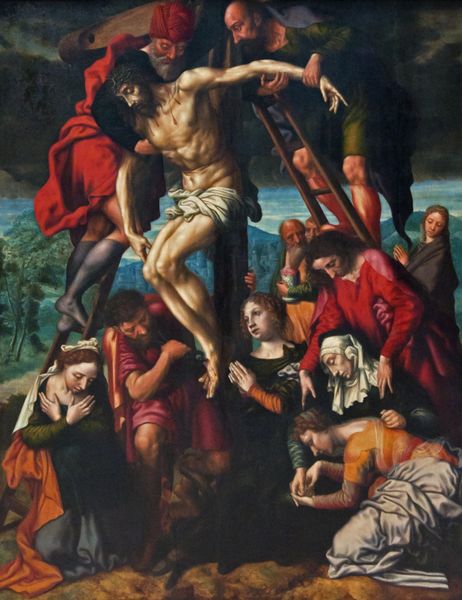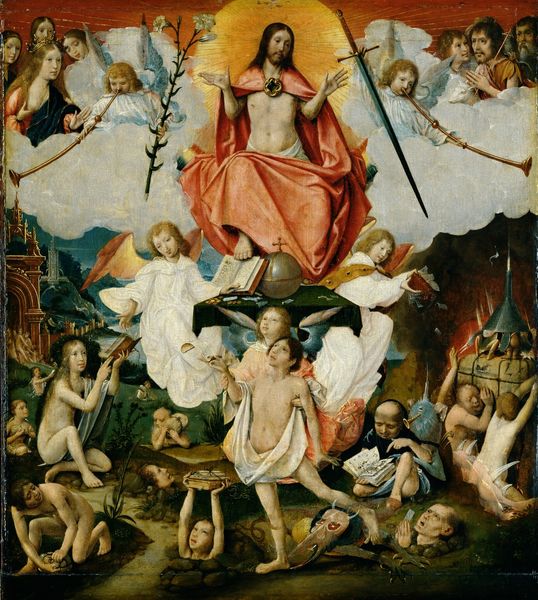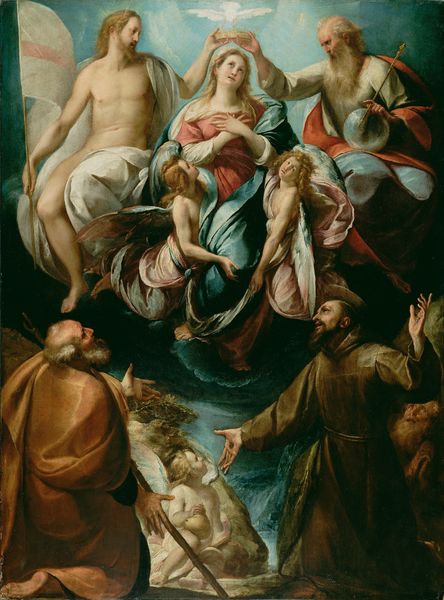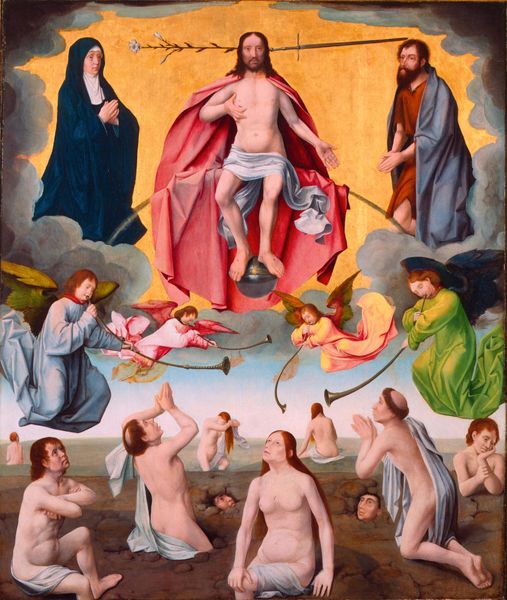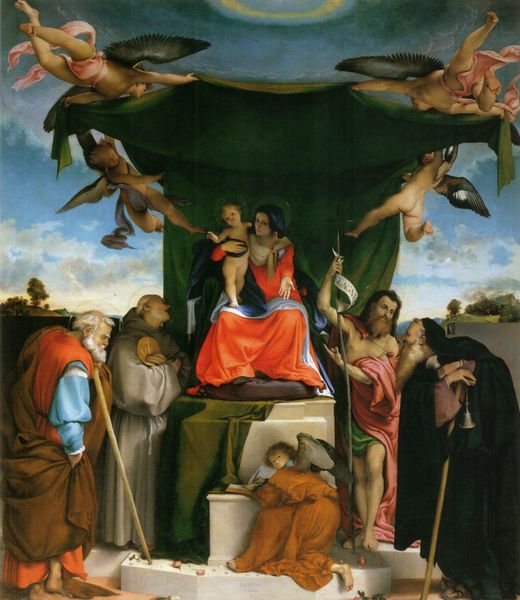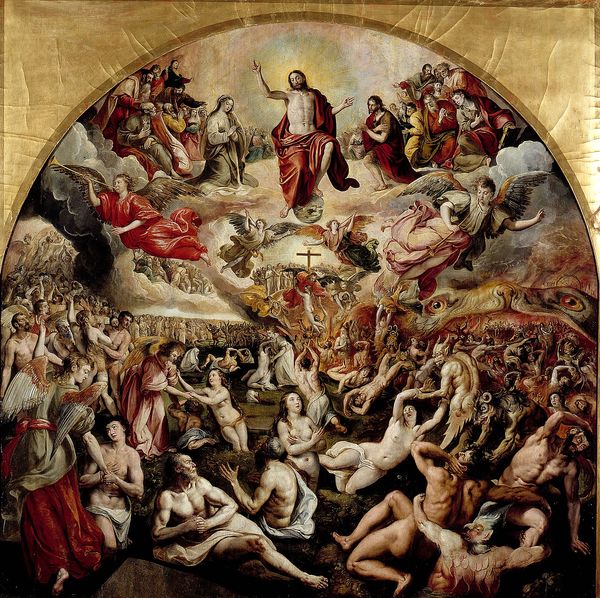
The Assumption of the Virgin with Saint John the Baptist, aint Sebastian and a Donor c. 1530
0:00
0:00
oil-paint
#
allegory
#
oil-paint
#
11_renaissance
#
oil painting
#
history-painting
#
italian-renaissance
#
angel
Dimensions: 236.4 x 148.1 x 2.8 cm
Copyright: Public Domain
Curator: This is Giacomo Francia’s oil painting, “The Assumption of the Virgin with Saint John the Baptist, Saint Sebastian and a Donor,” created around 1530. Editor: It’s a rather striking image, almost a bit saccharine at first glance, with that warm golden light suffusing everything. The composition seems to lift upwards, doesn't it? Curator: Absolutely. The Renaissance was a period of significant theological and social shifts. The figures of the Virgin Mary, John the Baptist, and Saint Sebastian, venerated for their roles as intercessors, served as potent symbols of hope during times of uncertainty, particularly for plague-ridden cities. The donor's inclusion also speaks volumes about the increasing agency and visibility sought by lay individuals within religious narratives of the time. Editor: I am noticing how Francia has created visual relationships among all the characters. Note the upward gazes and gestures unifying all of the people. This directional interplay really draws you into the narrative being displayed. I see his method of rendering each with an emphasis on idealizing, smoothed forms, further unifying the heavenly mood. Curator: Francia also incorporates allegorical references related to martyrdom and redemption, and in relation to the gendered ideas of grace in Christian theology. For example, the Virgin’s pose of submission speaks to the prescribed roles for women within Renaissance society. This, juxtaposed with the male saints, highlights how cultural anxieties about the role of women influenced art. Editor: And let’s note how he uses oil paints to build these subtle layers of tone and texture. The ethereal figures almost dissolve into light at the top, juxtaposed by the realistic portrayal of the donor, still bound to earthly form. Curator: Considering the political climate of 16th-century Italy, these commissions allowed artists like Francia to provide a means for local wealthy patrons to signal support of church power. It’s interesting to look into who the patrons of these paintings are—and what families benefitted from the stories they tell. Editor: Indeed. By deconstructing the formal properties of the image in relation to its devotional use, we expose Francia's artistic contribution as one both complex and meaningful. Curator: Analyzing how such paintings acted as cultural and political capital for the patrons helps us grasp how art production wasn't solely an act of pious devotion but one intricately woven into social power dynamics. Editor: What initially felt straightforward, as a visually engaging painting, ends up having multifaceted complexity that deserves closer consideration and additional inquiry into Francia's choices.
Comments
No comments
Be the first to comment and join the conversation on the ultimate creative platform.
